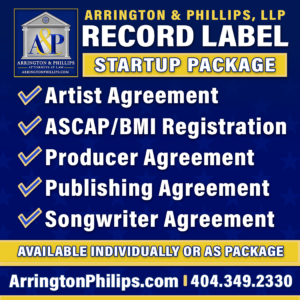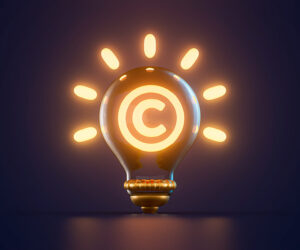If copyright creates a group of exclusive rights in the creator, that should mean permission is needed when you want to incorporate someone else’s creative work into your own. But permission is not always needed. Fair use is a concept that can protect you from a claim of infringement when using someone else’s work without permission. The question is, when is the use fair? There is no bright line answer to the fair use question but there is a framework for analyzing the problem.
The Four Factors of Fair Use
Four factors must be considered when thinking about fair use:
(1) the purpose and character of the use including whether the use is of a commercial nature or is for nonprofit educational purposes;
(2) the nature of the copyrighted work;
(3) the amount and substantiality of the portion used in relation to the copyrighted work as a whole; and
(4) the effect of the use upon the potential market for or value of the copyrighted work.
These factors must be balanced in light of the objective of copyright law which is to encourage the progress of useful arts. Many people suffer from the misconception that if a use is commercial, it cannot be fair. The Supreme Court has rejected that notion:
“Instead, the central purpose of the analysis is to see whether the new work merely supersedes the original creation, or instead adds something new, with a further purpose or different character, altering the first with new expression, meaning, or message; it asks, in other words, whether and to what extent the new work is transformative. “
The more transformative the new work the less important the other factors, including commercialism, become.
How have you changed the work?
Let’s take a look at each factor using concrete examples of the law in action (often inconsistently) in specific cases.
The First Factor
How and why are you using the original work? That is the essence of the first factor — the purpose and character of use.
The estate of Dr. Seuss tried to shut down a play called Who’s Holiday which depicts the character Cindy Lou Who in middle age. The story picks up from where The Grinch Who Stole Christmas left off and things haven’t gone well for Cindy Lou.
Cindy Lou is not so sweet and innocent anymore. She’s a drug-addled, foul-mouthed, ex-con who had a child with the Grinch then killed him (the Grinch, not the child). The court had no trouble finding that the play is transformative of the original work because it recontextualizes the children’s story by mocking its naiveté.
Parody is considered transformative and therefore fair use because of its character and purpose. Scholarship, research and educational uses often also qualify as fair use.
Fair Use Tip
Be prepared to articulate why you have chosen to use someone else’s creative work and how you have transformed it into something new or with a different message.
Transformative use has found footing in the visual arts. An LA street artist sued the band Green Day for infringement when they used his image as part of a video back drop for their stage performances.
The court decided that the use was fair because the image conveyed new information, aesthetics, insights, and understandings distinct from the original piece. Incidentally, the street artist, Derek Seltzer, had a copyright registration on his work unlike Rime. But, as they say in the UK, fat lot of good it did him.
The Second & Third Fair Use Factors
Highly creative works are entitled to more protection than works that are less creative. That’s the crux of the second factor. Facts and ideas aren’t protected by copyright at all.
When Gerald Ford left office, he wrote a memoir in which he explained his rationale for pardoning Richard Nixon. The magazine The Nation obtained a pre-release copy and wrote an article called “Behind the Nixon Pardon.” The article quoted 300 words verbatim from the book. Ford’s publishers sued for infringement.
The magazine argued that facts aren’t protected by copyright. The pardon is a fact of historic significance. Plus, they only used 300 words out of the book and the rest was paraphrased so there couldn’t be infringement, they reasoned.
The case went all the way up to the Supreme Court which held that Ford’s expression of the facts surrounding the pardon is creative and protected.
The 300 words The Nation took are the heart and soul of the book and were made into the “dramatic focal points” of the article. Even though not many words were taken, the ones that were taken were substantial (the third factor). Everybody wanted to know what Ford was thinking when he pardoned Nixon and The Nation scooped the man’s own words.
It was a case of principle, not principal. The publishers were awarded $12,500 for their victory.
The Fourth Fair Use Factor
If use of the original work has a negative impact on its marketability, that weighs against fair use.
In the Sconnie Nation case, a small batch of T-shirts was made from a photograph of the mayor of Madison, Wisconsin. The image was snagged off of the city’s website, posterized (reduced to a small number of different tones), the background removed, and the mayor’s face was turned green. The photographer sued for infringement.
The court held that the use of the image was fair because the T-shirt did not have an adverse impact on the market for the photograph. This seems plausible. The third factor also supported fair use because the court decided only a small amount of copying was involved. This seems disingenuous but that’s how these things go sometimes. Although the court found fair use, the transformative nature (or not) of the work played no role.
Fair Use Isn’t Always Needed
When permission is given for use of an original work such as with Creative Commons licenses, a fair use analysis isn’t needed. If the original creative work is in the public domain, fair use does not need to be considered. Public domain works are not protected by copyright.
Another example of copyright-free material is a faithful photographic reproduction of a two-dimensional piece of art. The art itself might be protected by copyright, say a new piece of visual art, but the photo of the art is not.
Fair Use Protection Isn’t Perfect
Whether using someone else’s creative work is fair is a fact intensive analysis — with the possibility of different conclusions depending on who does it. But it is an important analysis to make because it reduces your risk of an infringement claim if you’re using someone else’s work. Considering the four factors of fair use also protects you from making an incorrect claim that someone else has infringed your work.
About the Author
Kathryn Goldman helps small business people, writers, artists, and creative professionals make a living from their creative work by teaching them how to protect and enforce their rights. She is an attorney who writes these posts to help you be more thoughtful about intellectual property and the law as you build your business, write your stories, and create your art.
Source: Creative Law Center









